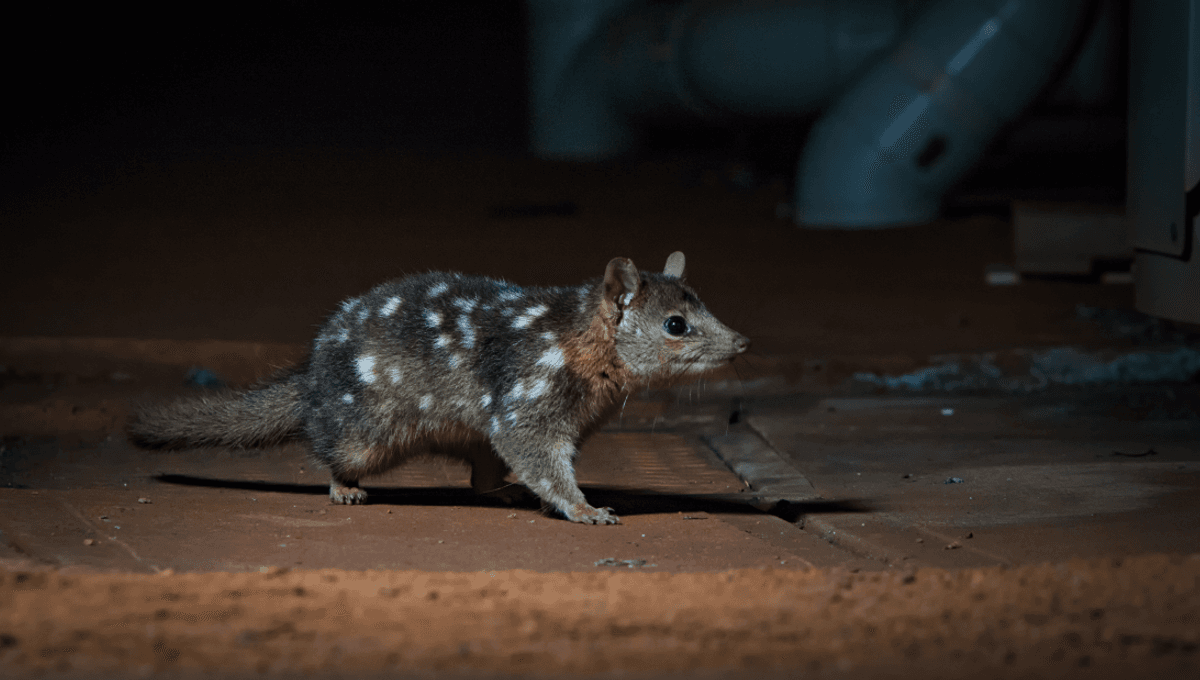
In a world-first application for gene editing technology, Colossal Biosciences is attempting to use CRISPR to make the endangered northern quoll resistant to the neurotoxins of cane toads. Snacking on a cane toad can be a fatal error for a hungry quoll, but the world-first de-extinction company is striving towards introducing genetic resistance that could be passed to the next generation.
Cane toads (Rhinella marina) were introduced to Queensland in the 1930s to disastrous effect, and northern quolls (Dasyurus hallucatus) have since seen their numbers plummet by 75 percent. The invasive toads are bad news for hungry quolls because they’re vulnerable to its neurotoxins, which are present at all stages of the toad’s lifecycle, from egg to tadpole, toadlet to toad.
We spoke to Ben Lamm and Professor Andrew Pask, partners in the combined Colossal and University of Melbourne team, to find out more about the world-first approach to gene editing, and how this conservation effort could shape the future of the endangered northern quoll.
How did you identify the target for CRISPR-editing to make the quoll resistant to the invasive cane toad’s neurotoxins?
“Our teams studied other animals that have natural resistance to cane toad neurotoxins to understand what could confer natural resistance, and if it was editable in other animals. In observing those animals, Dr Stephen Frankenburg theorized that a relatively small edit would be needed to begin to confer resistance to quolls. After several years of building resources from northern quoll tissue samples and introducing different genetic edits to the cells of a dunnart, which is closely related to the northern quoll (in the family Dasyuridae), the combined teams successfully engineered resistance in dunnart cells. We expect to apply the same edit to quolls (who are endangered) and see the same resistance.”
Will gene-edited quolls be completely resistant to the neurotoxins, or will there still be some negative side effects to predating on cane toads?
“Our objective is that in the near term the quolls will be better predators for cane toads. The new edit is 100-fold more toxin resistant in the context of cell culture, which means that quolls might get slightly sick, but they shouldn’t die.
They will either be able to eat the cane toads or they will learn that eating them makes them sick. Either way, it will be a huge improvement. But, right now we need to conduct more experiments, more research and then begin to observe quoll behavior to really understand the impact.”
What’s the goal?
“If we can save the quolls that will be monumental. They are a vital part of the Australian ecosystem and their loss would have devastating impacts on the region’s biodiversity. It is a big step and the first time in the world that gene-editing technologies could be used for the conservation of a threatened species.”
What needs to happen next before it can be tested in the wild?
“As a next step in introducing toxin resistance to the northern quoll, the combined Colossal and University of Melbourne team has established eight northern quoll cell lines from pouch young. We are now working to reprogram those quoll fibroblasts into induced pluripotent stem cells (iPSCs). Once the iPSCs are generated, we can correct the toxin susceptibility at the cellular level. This will then ensure hereditary resistance, which will give the northern quoll a fighting chance at survival.”
Colossal Biosciences recently partnered with the conservation giant Re:Wild, with the shared aim to prevent the extinction of some of the world’s rarest animals. While Colossal is arguably most well known for its efforts to bring back the mammoth, it’s a reminder that innovative technologies can have applications across the sciences, and what we’ve learned in pursuit of a mammoth has even informed human reproductive technologies.
Isn’t science amazing?
Source Link: World-First Gene Editing Approach Wants To Make Quolls Resistant To Cane Toad Neurotoxins